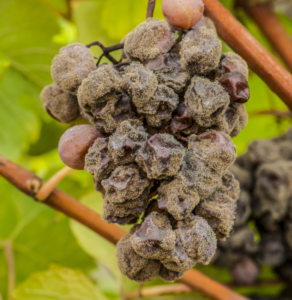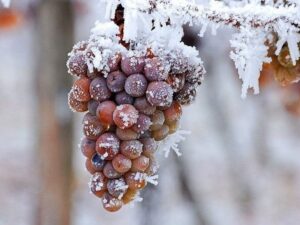A few issues ago, we focused on red dessert wines that you might encounter at some wineries, where they are almost an afterthought compared with the table wines made there. Of course, there are certain parts of the world where dessert wines are the main event and some of those are red: Port from Portugal, vin doux naturel from the south of France, Recioto from Italy’s Valpolicella region and Mavrodaphne from Greece.
In the United States, there are few if any wineries that specialize in dessert wines, and those who do usually make them from white grapes: Reisling, Vidal, Rousanne and sometimes Chardonnay or Sauvignon Blanc. There are many renowned wineries that do have white dessert wines on their lists, sometimes. They don’t have the proper climatic conditions every year to make these wines so visitors won’t always have a chance to try them. As is often the case, if those who come to taste the main production show genuine interest and some knowledge, we have experienced that the server “just happened” to have a bottle of their dessert offering in the refrigerator that could be shared.
 Grapes that have been attacked by botrytis, the Noble Rot. Photo courtesy of Vinoble.
Grapes that have been attacked by botrytis, the Noble Rot. Photo courtesy of Vinoble.
Unsurprisingly, California produces the most white dessert wines in the US. But they are also to be found in Washington and New York states. Some are the result of what is known as the Noble Rot, botrytis cinerea, a fungus that attacks the grapes, sucks most of the water out of them and leaves very concentrated sugars behind. Naturally, it takes a lot of shriveled grapes to make even a half bottle, so that’s why producers are a bit reluctant to share tastes. Botrytis doesn’t always occur – another reason it’s hard to find and get a chance to taste these wines, but in the Sauternes region of France it’s routine. A trip to the Bordeaux region is incomplete without visiting Sauternes.
Making ice wine. Photo courtesy of New York Upstate.
Another common way of making dessert wines is to let the grapes freeze. The resulting ice crystals puncture the skins of the grapes, also letting out much of the water when they defrost. In the US and Canada, we call these ice wines. Of course, this requires very cold conditions while the grapes are still on the vines. This does happen in Canada every year, so the Canadians are the world champs of ice wine, mostly in Ontario but also in Québec. These wines tend not to be as sweet and are better at accompanying fruits and cheeses than with chocolate.
Lastly, there are late harvest dessert wines, made from grapes that are left on the vines to dry out. They tend to be a bit raisin-y for that reason. They are more frequently made in Europe than in North America. Late harvest wines are known as Vendage Tardive in France (particularly in Alsace) and Spätlese in Germany. Visitors to those places will surely get a chance to taste their dessert wines, after sampling Reislings and Gewurtztraminers.
Wine tasting in regions that specialize in white dessert wines can overload the senses a bit, but you can be certain to try them. In regions of Wine Country where dessert is not the main reason to visit, tasters need a bit of luck.
